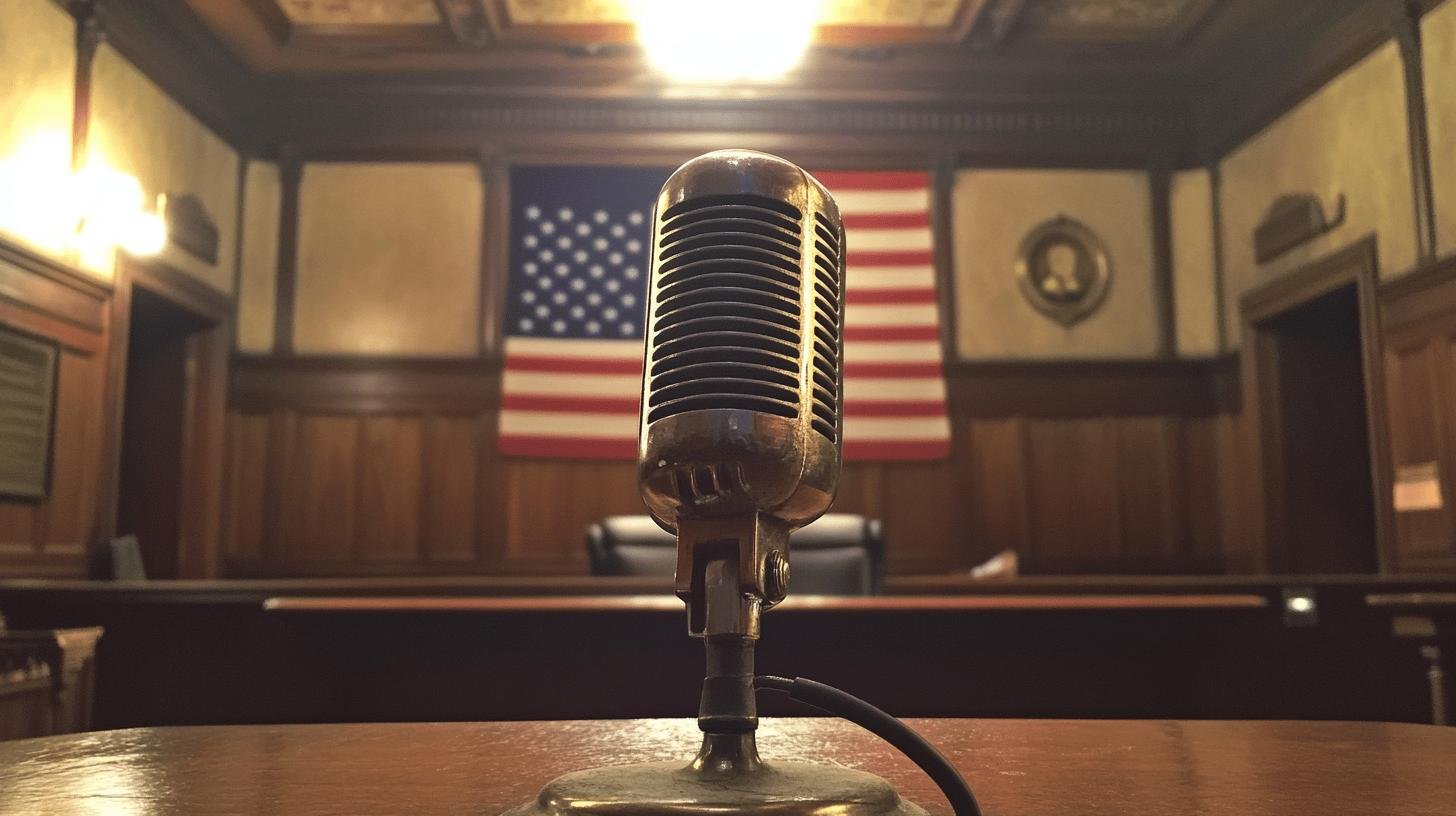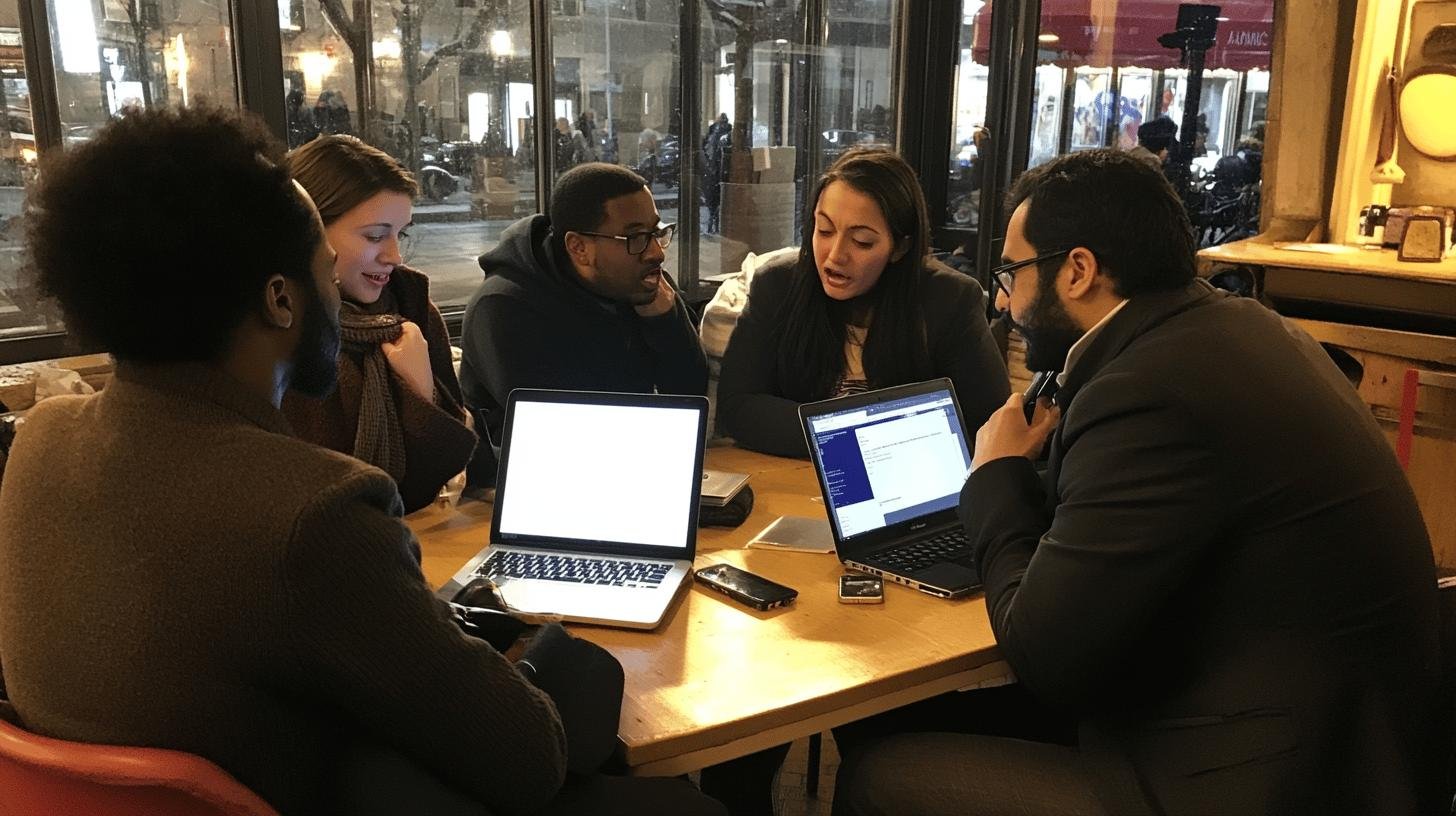TL;DR:
- Freedom of speech is a fundamental right, protected by the First Amendment in the U.S. and Article 19 of the Universal Declaration of Human Rights.
- Important countries upholding this right include the U.S., Canada, Germany, India, and Australia.
- Major legal cases include:
- Brandenburg v. Ohio (incitement)
- Chaplinsky v. New Hampshire (fighting words)
- United States v. Dinwiddie (true threats)
- Miller v. California (obscenity)
- New York Times Co. v. Sullivan (defamation)
- Davis v. Monroe County (harassment)
- Freedom of speech promotes democracy, innovation, and social change, but faces contemporary challenges like hate speech and digital content moderation.
Is freedom of speech really a fundamental right or just a convenient catchphrase? This question taps into a heated debate that has spanned generations and borders. While some herald it as a cornerstone of democracy, others see its application as uneven, often tipping the scales of fairness.
How does freedom of speech fit into today’s legal and cultural landscapes? This blog explores both global and American perspectives on a right that seeks to protect the voice of every citizen while balancing social responsibilities.
Understanding Freedom of Speech as a Fundamental Right
Is freedom of speech a fundamental right? Absolutely. It is a cornerstone in many legal systems worldwide. In the United States, the First Amendment is a prime example. It protects this right and ensures it remains vital to democracy. Globally, the Universal Declaration of Human Rights recognizes freedom of speech under Article 19, reinforcing its importance. This inclusion highlights the international consensus on its role in maintaining open societies.
- United States
- Canada
- Germany
- India
- Australia
Freedom of speech is essential for promoting democracy. It allows citizens to engage in open dialogue, challenge ideas, and foster societal growth. This right supports the exchange of diverse viewpoints, crucial for innovation and social change. By encouraging discussion, it helps protect other rights and ensures active participation in democratic processes. Thus, it’s a fundamental choice for any society valuing liberty.
Legal Frameworks Protecting Freedom of Speech

The First Amendment of the United States Constitution is essential for safeguarding freedom of speech. It states that Congress cannot make laws restricting speech, press, assembly, or the right to petition the government. This amendment reflects the Founders’ belief in free expression as an inherent right. The U.S. has historically imposed few restrictions on speech, solidifying its role in democracy.
Globally, protections for free speech vary. The European Convention on Human Rights, under Article 10, guarantees expression but allows certain restrictions. These ensure respect for others’ rights and protect national security. Similarly, the Canadian Charter of Rights and Freedoms safeguards speech under Section 2(b). These frameworks highlight a global commitment to speech protection, shaped by unique cultural and historical contexts.
Balancing free speech with limitations is complex. The U.S. First Amendment provides strong protections but restricts speech that incites violence or recklessly harms reputations. Other countries may impose stricter limits to prevent harm. This reflects different priorities in maintaining order while upholding the critical right to free expression.
Historical Context and Significant Legal Cases
Freedom of speech in the U.S. has a rich history, marked by both protection and limitation. In 1798, the Alien and Sedition Acts restricted defamatory statements against the government. These Acts highlighted the tension between order and free expression. Over time, society evolved to recognize speech as a fundamental right, leading to significant legal challenges and protections.
Important Supreme Court cases have shaped free speech rights. In Schenck v. United States (1919), the court introduced the “clear and present danger” test for speech limitations. This was key to balancing free speech with national security. Later, in Brandenburg v. Ohio (1969), it protected speech unless it incited imminent lawless action. These cases show the ongoing negotiation of speech boundaries and the court’s refining role.
These landmark cases continue to influence today’s free speech debates and legal norms. Principles from Schenck and Brandenburg guide how courts evaluate speech-related issues. They underscore the dynamic nature of free speech rights, adapting to societal shifts while maintaining a fundamental role in democratic discourse. As new challenges like digital speech emerge, these precedents provide a framework for ongoing dialogue.
Limitations and Challenges to Freedom of Speech

Certain types of speech are not protected by the First Amendment. These include incitement to imminent lawless action, defined in Brandenburg v. Ohio, where speech intending to trigger immediate illegal activity is unprotected. Fighting words, inciting violence directly, fall under this limit, as seen in Chaplinsky v. New Hampshire. True threats, aimed at instilling fear of harm, are unprotected—as in United States v. Dinwiddie. Obscenity, lacking serious value, was outlined in Miller v. California. Defamation involves reputation-damaging false statements, with proof varying for public figures. Harassment, as per Davis v. Monroe County, involves conduct altering a victim’s environment.
- Brandenburg v. Ohio (incitement to imminent lawless action)
- Chaplinsky v. New Hampshire (fighting words)
- United States v. Dinwiddie (true threats)
- Miller v. California (obscenity)
- New York Times Co. v. Sullivan (defamation)
- Davis v. Monroe County Board of Education (harassment)
The line between legally permissible and morally acceptable speech is often blurred. Legally, the First Amendment protects broad speech; morally, stricter standards may apply. For instance, while hate speech is protected in the U.S., many find it morally wrong. This highlights the complexity of aligning legal rights with societal values, where moral boundaries might be tougher than legal ones.
Contemporary challenges to free speech are ongoing. Hate speech, although legal, sparks debate about its impact. Social media complicates this, struggling with content moderation and free speech. The digital age raises new questions about speech limits, privacy, and balancing open dialogue with protection from harm. These challenges require continuous dialogue to navigate the evolving expression landscape.
The Importance of Freedom of Speech in Society
Is freedom of speech important for supporting other rights? Certainly. It is crucial for safeguarding other essential rights and liberties. It acts as a shield, allowing individuals to express dissent and call for change without fear. By enabling open dialogue, it ensures active participation in democracy. This is vital for holding leaders accountable and shaping laws reflecting the people’s will.
Does free speech drive innovation and social change? Yes, it does. It creates an environment where new ideas can thrive, leading to innovation. It encourages cultural development by allowing diverse perspectives to be shared. This exchange promotes social change, challenging norms and inspiring new ideas. As a cornerstone of free societies, freedom of speech is vital for continuous growth and adaptation in a changing world.
Final Words
Exploring the question, “Is freedom of speech a fundamental right?” reveals its critical role in global, legal, and societal domains. The journey through constitutional protections, historical cases, and societal importance highlights its significance. This right is not just a legal principle; it’s vital for democracy, open dialogue, and societal growth.
The balance of protecting and limiting speech continues to evolve, adapting to new challenges. Embracing freedom of speech supports democratic engagement and innovation. As societies grow, maintaining this fundamental right remains crucial for ensuring active participation and continuous progress.
FAQ
What are the 5 limitations of freedom of speech?
Speech is limited when it incites imminent lawless action, involves fighting words, true threats, obscenity, or defamation. These examples show the balance between free expression and public safety.
What are examples of freedom of speech violations?
Examples include government censorship, arrest for peaceful protest, or punishment for whistleblowing. These actions infringe on one’s right to express opinions freely.
What types of speech are not protected by the First Amendment?
Speech not protected includes incitement to violence, fighting words, threats, obscenity, defamation, and certain forms of harassment. These are restricted to maintain public order.
Why is freedom of speech important?
Freedom of speech is crucial as it supports other rights, encourages open dialogue, promotes democratic participation, and allows for social change and innovation.
Is freedom of speech a fundamental human right?
Yes, it is a fundamental human right. Recognized globally, it is key to democracy, protected by documents like the Universal Declaration of Human Rights.
What does the US Constitution say about freedom of speech?
The First Amendment of the U.S. Constitution protects freedom of speech, press, assembly, and petition, preventing Congress from enforcing laws that restrict these liberties.
Is freedom of speech a right or privilege?
Freedom of speech is a right, not a privilege. It is an inherent and protected aspect of democratic societies, ensuring individuals can express themselves freely.

